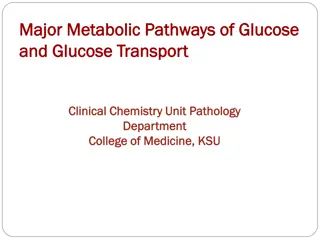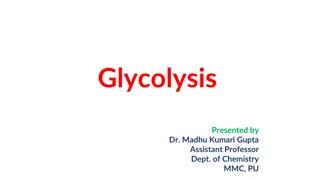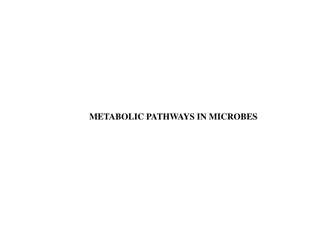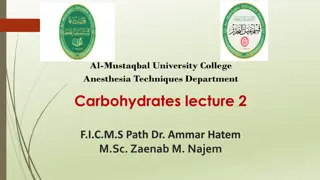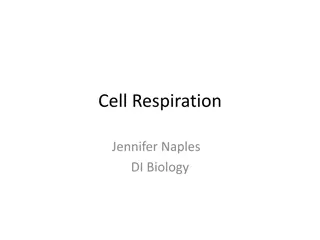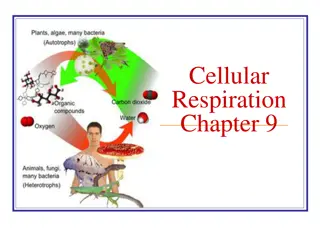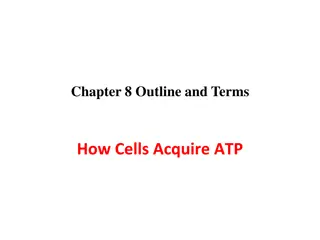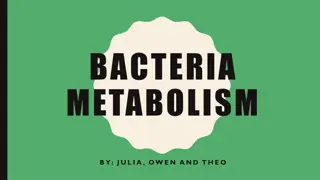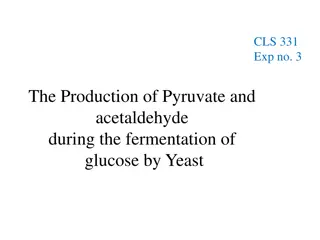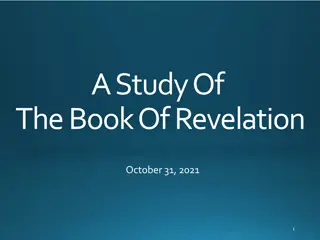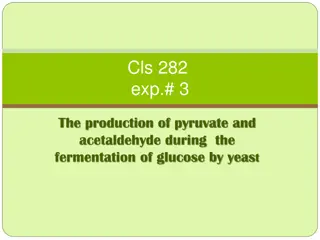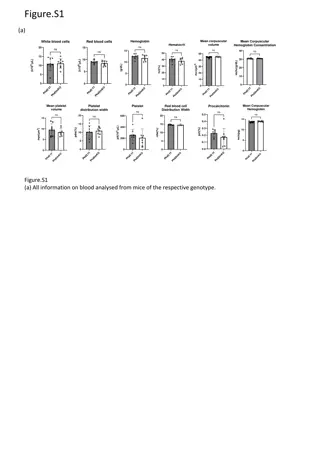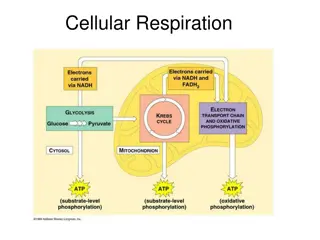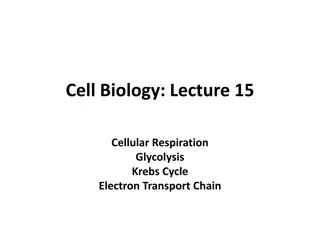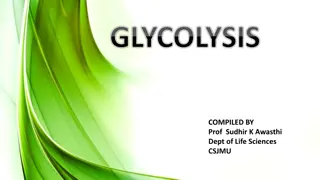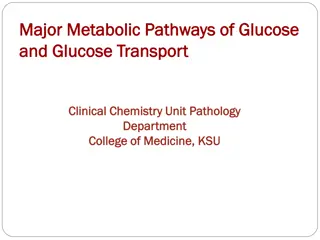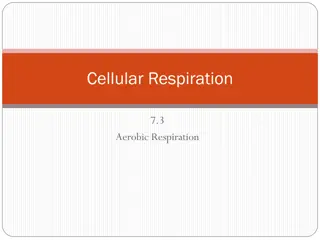
Understand Glycolysis: Regulation, ATP Production, and Anemia
Explore the intricate details of glycolysis, including regulatory mechanisms, ATP production, pyruvate kinase deficiency leading to hemolytic anemia, and the distinction between aerobic and anaerobic glycolysis. Gain insights into the long-term regulation of glycolysis by insulin and glucagon, and delve into the consequences of pyruvate kinase mutations.
Download Presentation

Please find below an Image/Link to download the presentation.
The content on the website is provided AS IS for your information and personal use only. It may not be sold, licensed, or shared on other websites without obtaining consent from the author. If you encounter any issues during the download, it is possible that the publisher has removed the file from their server.
You are allowed to download the files provided on this website for personal or commercial use, subject to the condition that they are used lawfully. All files are the property of their respective owners.
The content on the website is provided AS IS for your information and personal use only. It may not be sold, licensed, or shared on other websites without obtaining consent from the author.
E N D
Presentation Transcript
Glucose Metabolism: Glycolysis By Reem M. Sallam, M.D.;Ph.D. Assistant Prof., Clinical Chemistry Unit, PathologyDept. College of Medicine, KSU sallam@ksu.edu.sa
Objectives:Glycolysis By the end of this lecture, students are expected to: Recognize the major regulatory mechanisms for glycolysis Discuss the unique nature of glycolysis in RBCs Assess the ATP production inglycolysis (aerobic/anaerobic) Define pyruvate kinase deficiency hemolytic anemia
Glycolysis:Revision Major oxidative pathway of glucose The main reactions of glycolytic pathway The rate-limiting enzymes/Regulation ATP production (aerobic/anaerobic) Pyruvate kinase deficiency hemolytic anemia
Summary: Regulation ofGlycolysis Regulatory Enzymes (Irreversible reactions): Glucokinase/hexokinase PFK-1 Pyruvate kinase Regulatory Mechanisms: Rapid, short-term: Allosteric Covalent modifications Slow, long-term: Induction/repression Apply the above mechanisms for each enzyme where applicable
Long-TermRegulation ofGlycolysis Insulin: Induction Glucagon: Repression
Pyruvate KinaseDeficiency HemolyticAnemia PK Mutation may leadto: 1. Altered Enz. kinetics 2. Altered response to activator 3. Decreased the amount of the Enz. or its stability
AerobicGlycolysis: Total Vs Net ATPProduction
Aerobic Glycolysis: ATPProduction ATPConsumed: 2 ATP ATPProduced: Substrate-level 2 X 2 = 2 X 3 = 4 6 10 ATP ATP ATP Oxidative-level Total Net: 10 2 = 8 ATP
AnaerobicGlycolysis NADH produced cannot be used by ETC for ATPproduction (No O2 and/or No mitochondria) Less ATP production, as comparedto aerobic glycolysis Lactate is an obligatory end product, Why? Because if not formed, All cellular NAD+will be converted to NADH, with no means to replenish the cellular NAD Glycolysis stops death of thecell
Anaerobic Glycolysis: ATPProduction ATPConsumed: 2 ATP ATPProduced: Substrate-level 2 X 2 = 2 X 3 = 4 6 4 ATP ATP ATP Oxidative-level Total Net: 4 2 = 2 ATP
2 2 AnaerobicGlycolysis in RBCs: 2,3-BPGShunt 2 2 2 2
Anaerobic Glycolysis inRBCs: 2,3-BPGShunt 2 2 2
Glycolysis in RBCs: ATPProduction ATPConsumed: 2 ATP ATPProduced: Substrate-level OR 2 X 2= 4 2 6 ATP ATP ATP ATP ATP ATP 1 X 2 = 2 X 3 = Oxidative-level Total 4 OR 2 OR 4 2= 2 0 Net: 2 2 =
Glycolysis in RBCs:Summary End product: Lactate No net production or consumption of NADH Energy yield: If no 2,3-BPG is formed: If 2,3-BPG shunt occurs: 2ATP 0ATP PK Deficiency hemolytic anemia dependson: Degree of PK Deficiency Compensation by 2,3-BPG
Take HomeMessage Glycolysis is a tightly-regulatedpathway PFK-1 is the rate-limiting regulatory enzyme Glycolysis is mainly a catabolic pathway for ATP production, But it has some anabolic features (amphibolic) Pyruvate kinase deficiency in RBCs results in hemolytic anemia
Take HomeMessage Net energy produced in: Aerobic glycolysis: Anaerobic glycolysis: 8ATP 2ATP Net energy produced in glycolysis in RBCs: Without 2,3 BPG synthesis: With 2,3 BPG synthesis: 2ATP 0ATP

